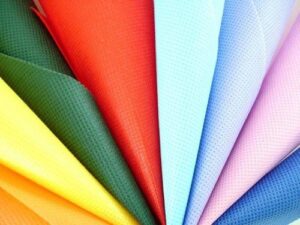Non Woven Spunbond Fabric is continuous filaments created by a web formation, integrated fiber spinning, and bonding. As it removes the in-between steps, that’s the reason why it is the shortest textile way from polymer to fabrics in one stage and offers opportunities for raising the production and reducing the cost. The Non Woven Spunbond Fabric has grown quickly in the past few years due to its great properties and high-efficiency process. Now it inhabits the largest share of the numerous techniques of nonwoven fabric production and finds its application in several fields.
After listening to the word nonwoven, the first thing that hits our mind is not woven or not knit, but here, the nonwoven is so much more than that of it. The introduction to nonwoven provides a long historical list of all possible beginnings of nonwoven. The starting range from ancient legends to recent technological development. The genuine roots of nonwoven may not be clear, but the term nonwoven fabric was first started in 1942 and was manufactured in the U.S.
The nonwoven fabrics were previously made with strongly bonding fiber webs. The first definition of nonwoven fabrics came from the American Society, which described them as “the textile fabrics created from carded web or fiber web held together by glues.” These are flat and spongy sheets built directly from molten plastic or metal film or separate fibers. These are not made by weaving or knitting and don’t need the conversion of fiber and yarn.
The practical definitions show the fundamental basis for the nonwoven processes, but due to the extensive variation in production techniques. A general explanation of Non Woven Spunbond Fabric is not enough. Each knitted or woven fabric process holds unique characteristics. Nonwoven components such as; web formation, fiber selection, bonding, and finishing techniques can be changed to deploy fabric properties.
The fiber used for nonwoven fabric
The basic elements of nonwoven are fibers. The manufacturers of nonwoven products can use almost any type of fiber. These consist of textile fiber, traditional fiber, and recently developed high-tech fiber. The selection of raw fibers to a limited degree regulates the properties of the final nonwoven products. Customer requirement changes in properties because of web formation and consolidation and cost processability are the factors on which the selection of fiber depends. The fiber can be in the form of staple fiber, filament, or yarn.
Raw materials
In the spunbond process, many polymers such as polypropylene, polyester, polyethylene, polyamide, polyurethane, etc., are used. Among various polymers, isotactic polypropylene (PP) is the most extensively used polymer for Non Woven Spunbond Fabric production because polypropylene is relatively reasonable and offers the highest yield. Also, the nonwovens have the lowest specific gravity and the highest adaptability.
Polyester (PET)
It has fabric properties such as tensile strength, modulus, and heat stability which are greater than those of polypropylene fabrics, and is used in nearly every nonwoven process technology. But, polyester is more expensive, and it is more difficult to process than polypropylene.
Polyethylene (PE)
It has good hydrophobicity and chemical resistance, and excellent electrical insulation properties. It is the most significant polymer for nonwovens.
Polyamide
It includes nylon 6 and nylon 6,6, which have properties that are highly energy-intensive than PET or PP and are nonwoven spunbonded for packing the materials.
Polyurethane (PUR)
It has an elastic property and is also used in nonwovens spunbonded for the applications like a diaper, masks, disposable wear, medical tape, and elastic stuffing materials. But, it has a great disadvantage of high cost.
Characteristics and properties of the fabric
When in-plane shear forces have been applied, the structure of knitted and woven fabrics allows the fibers to move willingly inside the fabric, which results in better comfort, whereas the calendar bonding of a spun web roots fibers to fuse and impart integrity to the sheet. The structure has a harder handle or shutter due to the halt of the fibers in the area of fusion. The effect can be normalized by limiting the bonds to very small areas. The saturation binding of spun webs with chemical binders such as acrylic emulsions can bond the structure throughout to give stiff sheets.




